 |
 |
 |
| |
Treatment failure in 20% on ART in Australian group: toxicity main culprit
|
| |
| |
22nd International AIDS Conference, Amsterdam, Netherlands, July 23-27, 2018
from Jules: successful ART therapy is more than just undetectable viral load, it should include safety, tolerability, toxicities & long term safety & tolerability & toxicities especially when considering older aging HIV+, this study was average age 50.8
Mark Mascolini
Antiretroviral therapy (ART) failed over 12 months in almost 1 in 5 adults on a stable regimen in a nationwide Australian cohort [1]. Toxicity explained 58% of treatment failures, while 24% had virologic failure.
HIV treatment guidelines recommend ART for everyone with HIV infection, regardless of CD4 count. Because rates and reasons for failure of current regimens in clinical practice remain poorly understood, Australian collaborators undertook this cohort study.
From September 2014 to November 2015, the investigators recruited 522 adults taking a stable suppressive antiretroviral regimen for at least 3 months. They broadly defined treatment failure as an antiretroviral switch for toxicity or drug interactions, virologic failure, progression to AIDS, death, or loss to follow-up. Virologic failure meant a viral load above 200 copies, consecutive loads above 50 copies, or one load above 50 copies with an ART switch. They used Cox proportional hazards regression to identify predictors of failure through 12 months of follow-up.
Among the 522 cohort members, 95% were men, age averaged 50.8 years, and HIV duration 12 years. The group had taken antiretroviral therapy for an average 11 years and had a viral load below 50 copies for an average 3.3 years.
During 12 months of follow-up researchers counted 115 episodes of ART failure in 102 people (19.5% of 522). Median time to ART failure measured 187 days (interquartile range 106 to 282 days). Sixty-seven of 115 ART failures (58.3%) could be blamed on a switch for toxicity, while another 13 switches (11.3%) reflected drug-drug interactions. Twenty-one switches could be traced to kidney toxicity, including 11 in people who stopped tenofovir disoproxil fumarate (TDF). Confirmed or unconfirmed virologic failures accounted for 27 ART failures (23.5%). Other reasons for ART failure were death (3), loss to follow-up (2), AIDS (2), and difficulty taking regimen (1).
Regression analysis identified 5 independent predictors of ART failure over 12 months at the following adjusted hazard ratios (aHR) and 95% confidence intervals:
Increased risk:
-- Developed new comorbidity: aHR 2.9 (1.6 to 5.3), P < 0.001
-- Interrupted concomitant medications in prior year: aHR 2.3 (1.4 to 4.6), P = 0.021
-- Psychiatric illness at baseline: aHR 1.9 (1.2 to 3.0), P = 0.005
-- Developed eGFR below 60 mL/min (falling kidney function): aHR 1.9 (1.1 to 3.2), P = 0.021
Lowered risk:
-- Sexually transmitted infection (STI) in prior year: aHR 0.4 (0.2 to 0.9), P = 0.044
The researchers noted that suboptimal antiretroviral adherence did not predict ART failure. They did not speculate on why a recent STI lowered the risk of failure. The regression analysis underlined the potentially harmful impact of comorbidities--including psychiatric illness--on sustained antiretroviral success.
Reference
1. Siefried KJ, Mao L, Riches S, et al. Failure of antiretroviral therapy (ART) in adults in Australia is mainly due to ART toxicity. AIDS 2018: 22nd International AIDS Conference, Amsterdam, Netherlands, July 23-27, 2018. Abstract TUPEB149.
https://programme.aids2018.org//PAGMaterial/eposters/7981.pdf
Failure of antiretroviral therapy (ART) in Australian adults is mainly due to ART toxicity
KJ Siefried1, L Mao2, S Riches1, S Kerr1, J Rule3,4, J McAllister1, J de Wit 2,5, A Carr1; on behalf of the PAART study investigators
1Centre for Applied Medical Research, St Vincent's Hospital, Sydney, Australia;
2Centre for Social Research in Health, The University of New South Wales, Sydney, AUS; 3National Association of People with HIV Australia;
4School of Public Health and Community Medicine, The University of New South Wales, Sydney, Australia;
5Department of Interdisciplinary Social Science, Utrecht University, Utrecht, The Netherlands
-----------------------------------------
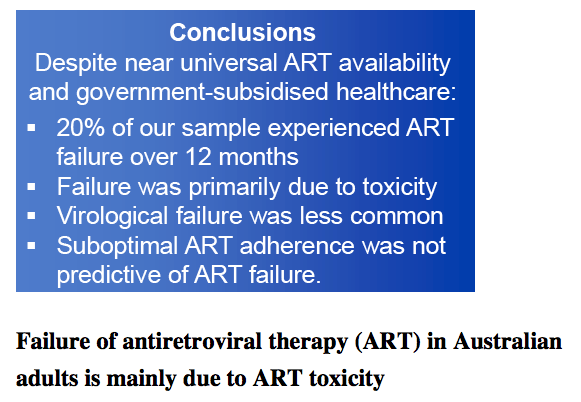
KJ Siefried1, L Mao2, S Riches1, S Kerr1, J Rule3,4, J McAllister1, J de Wit 2,5, A Carr1; on behalf of the PAART study investigators
1Centre for Applied Medical Research, St Vincent's Hospital, Sydney, Australia;
2Centre for Social Research in Health, The University of New South Wales, Sydney, AUS; 3National Association of People with HIV Australia;
4School of Public Health and Community Medicine, The University of New South Wales, Sydney, Australia;
5Department of Interdisciplinary Social Science, Utrecht University, Utrecht, The Netherlands
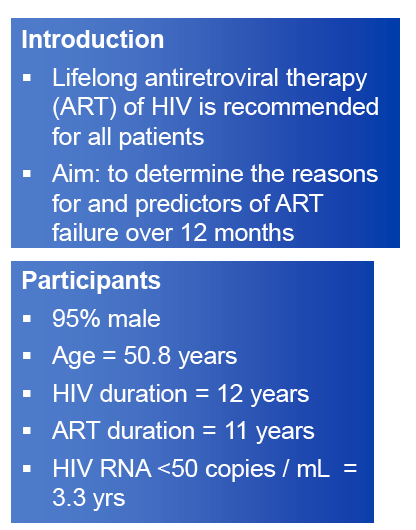
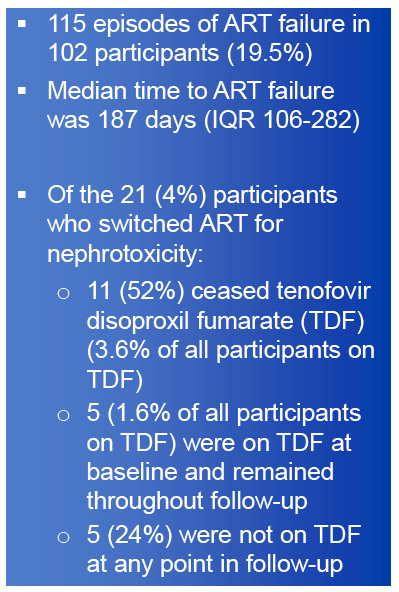
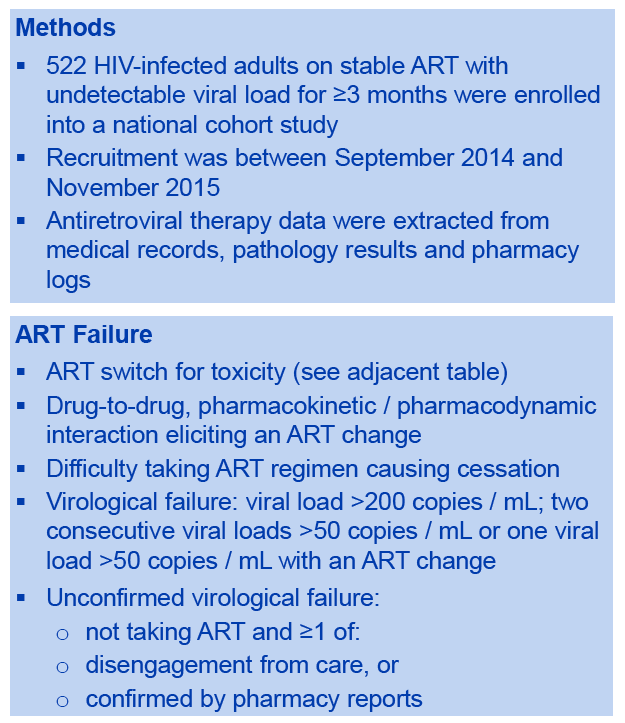

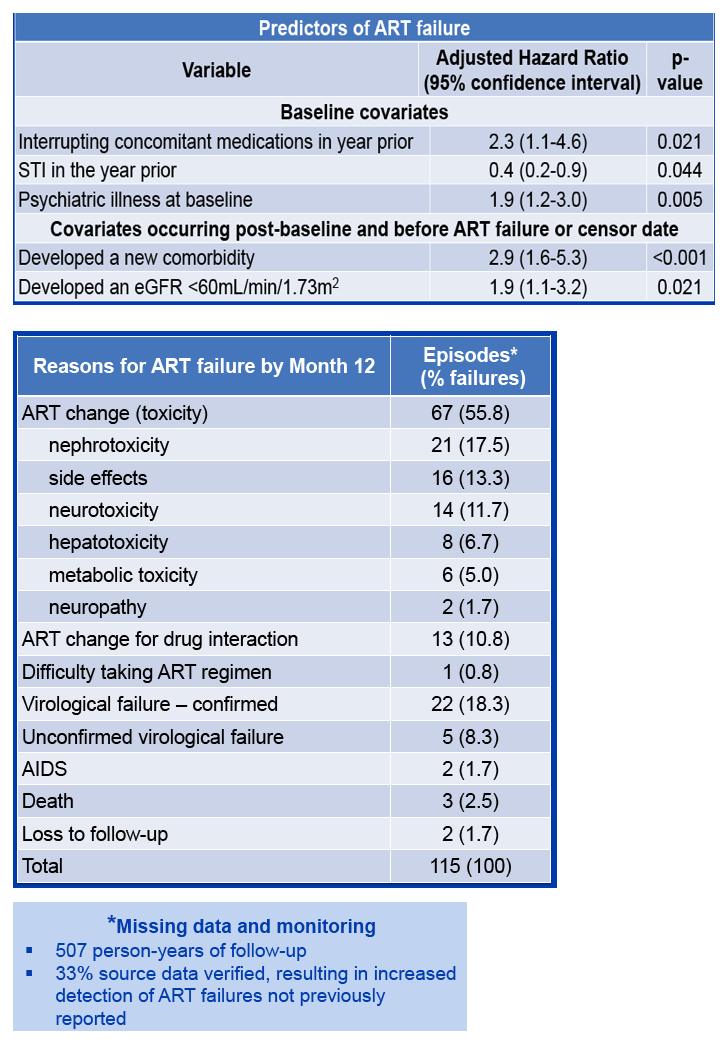
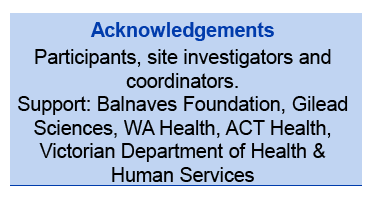
|
| |
|
 |
 |
|
|